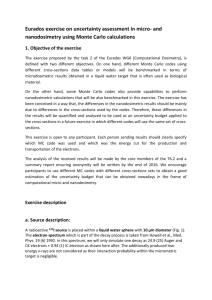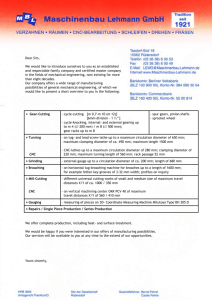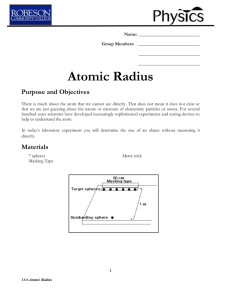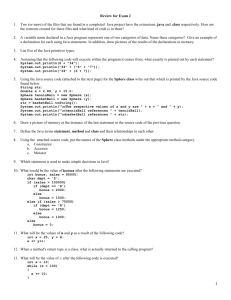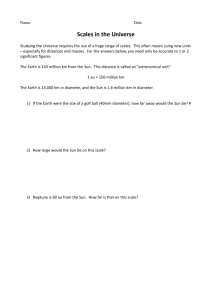Name______________________________________
advertisement
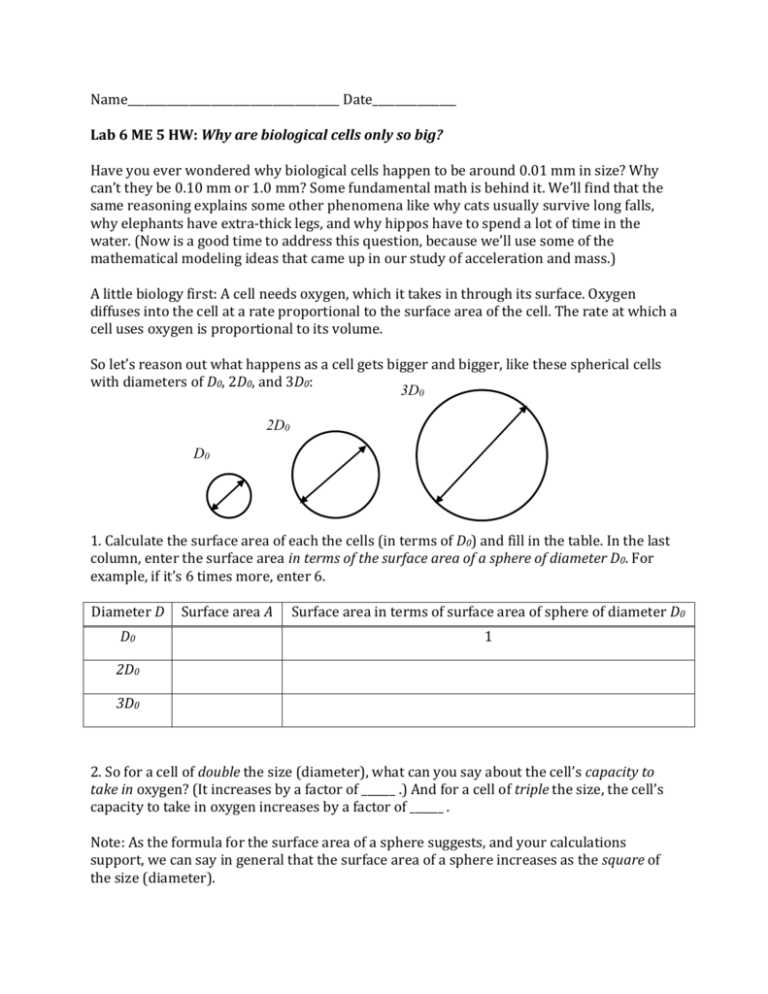
Name______________________________________ Date_______________ Lab 6 ME 5 HW: Why are biological cells only so big? Have you ever wondered why biological cells happen to be around 0.01 mm in size? Why can’t they be 0.10 mm or 1.0 mm? Some fundamental math is behind it. We’ll find that the same reasoning explains some other phenomena like why cats usually survive long falls, why elephants have extra-thick legs, and why hippos have to spend a lot of time in the water. (Now is a good time to address this question, because we’ll use some of the mathematical modeling ideas that came up in our study of acceleration and mass.) A little biology first: A cell needs oxygen, which it takes in through its surface. Oxygen diffuses into the cell at a rate proportional to the surface area of the cell. The rate at which a cell uses oxygen is proportional to its volume. So let’s reason out what happens as a cell gets bigger and bigger, like these spherical cells with diameters of D0, 2D0, and 3D0: 3D0 2D0 D0 1. Calculate the surface area of each the cells (in terms of D0) and fill in the table. In the last column, enter the surface area in terms of the surface area of a sphere of diameter D0. For example, if it’s 6 times more, enter 6. Diameter D D0 Surface area A Surface area in terms of surface area of sphere of diameter D0 1 2D0 3D0 2. So for a cell of double the size (diameter), what can you say about the cell’s capacity to take in oxygen? (It increases by a factor of ______ .) And for a cell of triple the size, the cell’s capacity to take in oxygen increases by a factor of ______ . Note: As the formula for the surface area of a sphere suggests, and your calculations support, we can say in general that the surface area of a sphere increases as the square of the size (diameter). 3. Calculate the volume of each of the cells (in terms of D0) and fill in the table. In the last column, enter the volume in terms of the volume of the sphere of diameter D0. For example, if it’s 12 times more, enter 12. Diameter D D0 Volume V Volume in terms of volume of sphere of diameter D0 1 2D0 3D0 4. So for a cell of double the size (diameter), what can you say about the cell’s need for oxygen? (It increases by a factor of ______ .) And for a cell of triple the size, the cell’s need for oxygen increases by a factor of ______ . Note: As you might see from the formula for the volume of a sphere, we can say in general that the volume of a sphere increases as the cube of the size (diameter). 5. Examine your responses to (2) and (4), and explain in your own words the trouble that arises as cells get bigger and bigger. 6. It’s useful to form the ratio A/V, the “surface area to volume ratio.” Calculate that ratio for each of the cells (in terms of D0) and fill in the table. In the last column, enter the surface area to volume ratio in terms of that ratio for the sphere of diameter D0. For example, if it’s half as much as for the sphere of diameter D0, enter 1/2. Diameter D D0 Surface area to volume ratio A/V Surface area to volume ratio, in terms of Surface area to volume ratio of sphere of diameter D0 1 2D0 3D0 7. In general, what functional form describes the relationship between A/V and D? Sketch a qualitatively correct graph of A/V vs. D. 8. For a cell that’s 10 times the size (10D0), by what factor does the surface area increase? By what factor does the volume increase? By what factor does the surface area to volume ratio change? So, for a cell that’s 10 times the size, there’s only _______ as much surface area to take in oxygen associated with each unit of volume that requires it. 9. To be concrete, let D = 10 µm. Calculate the surface area, the volume, and the surface area to volume ratio. (It’s OK to keep µm as your unit.) Interpret the result of your calculation for the surface area to volume ratio in your own words. (Recall how we interpreted the result of a calculation like 20 m/4 s = 5 m/s: “5 m is the distance traveled in each second.”) Repeat for a cell for which D = 100 µm.



